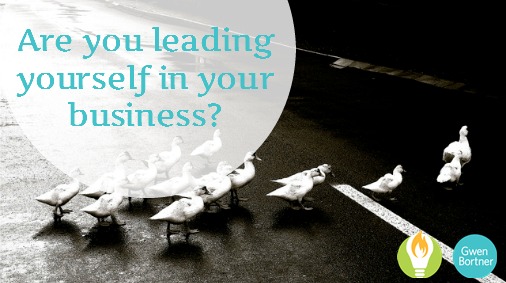
by Gwen Bortner | Office Productivity, Tasks & Goals, Tips & Tricks
A planner and To Do list are great tools for helping us be more productive, but sometimes we need an extra boost to keep us focused.
I have learned that when a similar idea or concept pops up repeatedly in my life, that is a clue that I should be paying attention. When a friend talked about using a timer for productivity and then I heard about the Pomodoro Technique, I decided I should give this a try.
The Process
As with all good productivity hacks, the process is simple: set a timer for a predetermined time and work until the timer goes off. Then set a second timer for a much shorter length of time and take a break. Determining the “correct” length of time is the tricky part.
My friend Edie accidentally discovered her optimal time while working between loads of laundry. The length of her dryer cycle allowed her to get quite a bit of work done while the time folding the laundry gave her mind a break from the task she had been concentrating on. When it was done, she was ready to go again. Through this process, she discovered she could work on tasks that required deep concentration for more total productive hours in a day by breaking it up into smaller chunks.
Pomodoro Specifics
The Pomodoro technique works around 25 minute intervals, but ultimately, I think each of us will have a different amount of time that will maximize our effectiveness. For myself, I find 50 minutes on, 10 minutes off to work surprisingly well. This is how I implement the system:
- Because most of my work is done at the computer, I utilize an online timer at TimeAndDate.com.
- I set up two timers: one for my work (50 minutes) and one for my break (10 minutes), and set them to start in sequence.
- I pick a task from my task list (or several if I think I can get more than one complete), start the timer and work on them until the alarm sounds.
- Then I take a break — browse social media, refill my water, use the restroom — until the second alarm sounds.
- I repeat Steps 3 & 4 until my tasks are complete or my work is done!
Why it Works
Most of us can focus for longer periods of time, but by breaking our time into smaller chunks, we are able to stay fresher and more alert. It also allows us to put off the things that might normally distract us. If the next break is no more than X minutes away, we can wait until then to engage in the “distraction” activity.
Most importantly it gives us a focus for getting a task (or tasks) done in a limited period of time. It is very easy for work to expand to fill the time that is available! By keeping those boundaries smaller, we are more likely to be efficient in the work in which we are engaging. A perfect example is this post — done in one work cycle where otherwise it might take 2 hours or more!
Give it a Try
Honestly, I don’t use this technique all the time. But when I find it hard to get actively engaged or feel like my productivity is low, I turn to my timer. I was skeptical when I first heard of it and it took some tweaks to figure out the correct balance of work and break time for me, but in the end I know this discovery has allowed me to be more productive in many ways and at times that would have otherwise been lost to distraction.
Let us know your results: Give this technique a try for a day (if you don’t already) and share what turned out to be your best balance of work and break time.

by Gwen Bortner | Office Productivity
These days, people treat multitasking like it’s a special talent; if you’re good at doing multiple things at once then that must make you a valuable and productive worker, right? Actually, that’s completely wrong.
Multitasking isn’t making us more productive; in fact, it’s doing exactly the opposite. According to INC, multitasking leads us to:
- a 40% drop in productivity
- 50% more time taken to accomplish a single task
- 50% more errors made while doing that task
So even though it may feel like you’re accomplishing more (because you’re working on more than one thing), you’re actually losing quite a bit of productivity when you focus on more than one thing at a time.
The Curse of Creativity
So many of us who lean toward the creative side of things seem drawn to multitasking. It’s not as much fun to focus on one thing at a time when there are so many (new! shiny!) distractions everywhere! Even in our personal hobbies, we often have multiple projects going at any given time, because it’s more interesting to start something new than to slog through something you’ve been working on for a while.
Context Switching
Though we often refer to it as multitasking, the real culprit here is context switching. The idea is that your brain is moving back and forth between thought processes or activities, even if technically you’re only working on one thing. For example: you’re writing a blog post, but your phone dings in the middle of it to let you know you’ve got a message on Facebook, so you stop to check that, and while you’re there you see an ad for those new shoes you’ve been wanting, and by the time you look at the clock you realize you’ve just wasted 30 minutes doing nothing at all.
Do you frequently find yourself jumping from one thing to the next, or are you able to remain focused on one task until it’s as complete as it can be in the moment? Read on for tips on how to increase your productivity by eliminating context switching from your daily routine.
Tips to Minimize Context Switching
- Block out your time. Set aside time for the things that take up time in your day: work tasks, personal or home-related tasks, and even things like checking email or browsing social media. You may tell yourself you’re “not going to check Facebook” during your working time, but let’s face it: you’re doing it anyway. By setting aside “Facebook time” on your calendar, you’re giving yourself permission to do that activity, but during the appropriate time for it.
- Keep your To Do list short. On any given day, you should have a list of no more than three important tasks you want to complete that day. By doing this you can give yourself the time you need to really devote your attention to those tasks, but if you overload your list with too many To Dos, you’ll feel tempted to work on them simultaneously or to switch between them before really completing anything, just to be able to say you worked on each item that day.
- Turn off the distractions. Our phones are like a window to the world outside, but they’re also a pipeline to distraction. You don’t NEED to be notified of every social media post, email, or even text message at any given minute of the day. If there’s a real emergency, someone will pick up the phone and actually call you. Turn off notifications on your phone during working hours, and make sure you don’t have any alerts on your computer.
- Get off the Internet. Having multiple tabs open while you’re working makes it too easy to just “click over for a minute” to check on a website that might distract you from your work. Cut out random Internet browsing during your work time. If you need to maintain a social media presence for your business, try to remember that you’re there for business – post to your own profile or group, but don’t get distracted reading other peoples’ posts.
Bonus “hack” for Facebook: set your Facebook page up so that it only shows you the groups you’re using for work or business, and hides all your personal feeds. That way you can check in for work and check back out again without getting distracted by photos of your best friend’s baby or your cousin’s dinner plate.
What’s the biggest “distraction trap” for you when you’re trying to be productive? Just knowing the answer to that question is the first step in avoiding that distraction in the future!
Would you like to train yourself to focus on what’s most important, and to work on the things that make the most difference in your life and business?
Join us in May for the Small Biz Book Club, where we’ll be reading Greg McKeown’s book, Essentialism. You’ll get a lot of great insights on how to improve your productivity and reduce distraction. Click here for all the details, or sign up using the box below:

by Gwen Bortner | Leadership, Office Productivity
Most of us have probably been in a situation where we worked with a group of people, and the project went well or terribly depending on the quality of the group leadership. In your business, whether you’ve got a company of 100, 10, or 1 – YOU are the leader. What’s the quality of that group’s leadership?
Do you think of yourself as a leader? If you’ve got the title of entrepreneur, CEO, or “wearer of all the hats,” you’re leading your company. It doesn’t matter how many people work for you – if you’re not in the regular habit of leading yourself, you won’t be able to lead anyone else, now or in the future.
What steps are you taking to become a better leader in your business? Here are a few questions to ask yourself:
Are you prepared for each day?
Do you regularly take time in the morning (or at the close of working time the night before) to prepare for your day? Do you have a list of tasks and one to three goals you want to accomplish each day? Do you know what absolutely must be done, what would be nice to accomplish, and what can be left off the list?
If your answer is NO, then take some time to think and plan at the start of tomorrow’s work day, and every day after that. Give yourself a list of no more than 3 tasks that must be accomplished, and set an intention for how you want that day to go. Establish this as part of your morning routine, and stick with it! You’ll be surprised how much more productive you are throughout the day when you’ve got a clear plan.
Do you regularly seek to improve?
Nobody ever got really good at something if they didn’t regularly strive to improve their skills, and the same holds true for running a business. As the leader of your business, you’ve got to start with improving yourself, and you’ve got to keep up the habit regularly. Read more business blogs or books (and apply the lessons you’re learning!), participate in webinars and online classes, go out and attend conventions or other events. There’s a ton of education available out there to help you get better at whatever you’re trying to improve, from marketing to operations to profit. Pick something and start learning! Put it on your calendar so that you’re setting aside time each week to learn something new.
Do you ask for feedback?
How do you know you’re good at something? Someone tells you! (The same is true for knowing if you’re not so good!). You can give yourself feedback by setting up regular times to review what’s working and what’s not in your business (once a month for a quick review and once a quarter for a longer one is a good rule of thumb). At these same intervals, it’s a good idea to get outside feedback, from employees, contractors, business advisers, consultants, and customers. Create a survey, send a quick email, give them a form to fill out, and ask them what you’re doing well and what could be improved. Then, the all-important next step is to follow up and make changes according to the feedback you receive.
What’s the very next step YOU will take in order to lead yourself toward improving your business?

by Gwen Bortner | Leadership, Tasks & Goals
Are you spending all your time in the day-to-day tasks of running your business, or do you regularly take time to think about what truly matters to you and plan out your overall mission and vision? If you don’t know where you’re going, or have a plan for how to get there, how do you ever expect to grow?
Do you (and everyone who works with you) know what you’re actually trying to accomplish? Have you ever outlined a “mission and vision” statement for your company?
Get Clear on Your Mission
Mission and vision statements aren’t any good if they’re super vague – there needs to be a clear objective. When you write yours, instead of saying things like “strive to provide excellent customer service,” write out your objectives using specific parameters and terms. Think of this as the way you want to do business, the type of company you want to run, and the type of CEO/owner/leader you want to be. Get very specific, and keep it simple. Otherwise, how will you know when you’ve succeeded?
Plan Your Goals
Once you have identified your bigger mission, it’s time to set goals that will help you achieve it. Something I have kept with me from my adventures in the knitting industry was this nugget of wisdom by Cath Kidson:
Stay true to your idea
Learn to say no,
Don’t confuse a distraction for an opportunity,
Trust your gut,
Don’t be afraid to ask for help,
Stay focused (See reference here.)
Remember as you’re setting your goals to always keep your mission statement in mind. For every opportunity that comes your way, hold it up in the light of your mission statement and make sure it’s a good fit before you go running down that path. Stay on top of your current goal, and focus on one thing at a time, to see real progress.
Test the Theory
It’s time to put your mission statement to the test:
- Could it be anybody’s, or is it distinctly yours?
- Ask your employees (if you have them – or consultant/contractors): what is their ultimate goal for your business? How similar are their answers and how close are they to YOUR answer?
- What would your customers say? If you asked them what your goal is, would they even be able to come close?
Once you have provided honest answers to these questions, you may realize that you need to tweak your mission statement to improve it. The process should constantly evolve as you do and as your business grows, so make a point to revisit it once a year and see if any changes need to be made.
By focusing on what’s most important and regularly reminding yourself of your larger goals, you’ll find you actually get where you wanted to go.

by Gwen Bortner | Book Review

by Gwen Bortner | Book Review

by Gwen Bortner | Training & Instruction
Marketing has always been one of my weaker areas when it comes to running a business; it has just never come easily to me to figure out how to sell what I make to the right people. Recently I came to the realization that maybe that’s because I was trying to make my business fit into someone else’s idea of what marketing should look like.
My strength has always been in the area of relationships. If you’ve read any of my work in the past then you probably know that I’m an off-the-charts extrovert, and I work best when I’m working with another person (live, and IN person if possible, or at least face-to-face through the magic of Skype). I get my energy from one-on-one interactions with other business owners, and that’s when I’m able to bring my best work to the table.
The Traditional Way
The “marketing gurus” of the Internet will tell you that in order to market your products you’ve got to create a hands-off “funnel” for your customers to fall into. Get them onto your website, hook them onto your email list, put them through a series of stock emails and explain to them why they need this thing you’re selling.
If you’re talented in the area of marketing copywriting, email sales pitch composition, and sales funnel creation, then that’s a great option for you! You can probably make a lot of sales following this traditional path. If you’re more like me, though – if you work well in the moment and it’s the act of talking to someone that most inspires you to be helpful to them – then you probably aren’t having a lot of success on this traditional path, either.
Playing to My Strengths
Since I’ve struggled with traditional marketing methods, I started to think outside the box: what if, instead of following the traditional path, I made my own that allowed me to focus on my strengths? If I work well in one-on-one conversations, then that’s probably the best way for me to connect with and serve my audience!
Once I figured that out, I started holding “discovery sessions” with some small business owners who are members of a Facebook group with me. In these sessions I asked them to tell me about their business struggles, which helped me to identify the common elements of struggle in the audience I hope to serve. In order to make the sessions helpful for them as well, at the end of each one I gave them a piece of advice or an insight for them to apply in their own businesses, to help them get on the way to solving their bigger struggles.
What about YOUR strengths?
Creative marketing is about serving your audience in a way that’s authentically YOU. Here are some ideas to consider for “thinking outside the box” in your marketing adventures:
- If you’re like me and your strength is in having actual conversations, get out there and participate in events that allow you the opportunity to connect in-person, like trade shows, sales events, and conferences.
- If you find it easier to talk than to write, consider using an audio or video element in your marketing. Shoot a quick video at your desk and explain something to your audience, instead of wasting hours poring over a blog post that turns out to be mediocre because you were trying to work in a medium that isn’t your best.
- If you are a visually creative person, spice up your marketing message with visual elements! Take beautiful photos, create info-graphics, or include a free download of some sort of artistic content.
- If you like to offer quick tips and “nuggets” of information, use social media as your method of delivery. It doesn’t take long to compose a tweet, a Facebook post, or an Instagram caption, and in these single-serving moments you’ll find ways to connect with more customers.
- If you do better when you’ve got the space to really hash out an idea, use an email newsletter as your primary method of marketing communication. Take your time and deliver quality content straight to your audience members’ inboxes.
How will you incorporate a new creative marketing strategy into YOUR business? How will you play to your strengths instead of following the crowd?
If you’re feeling stuck and you’re not sure where to go from here, or how to best utilize your strengths in YOUR business, I’d be happy to talk to you in a FREE 20-minute Discovery Session, like the ones I described in this post! Click the button to get on my calendar.











